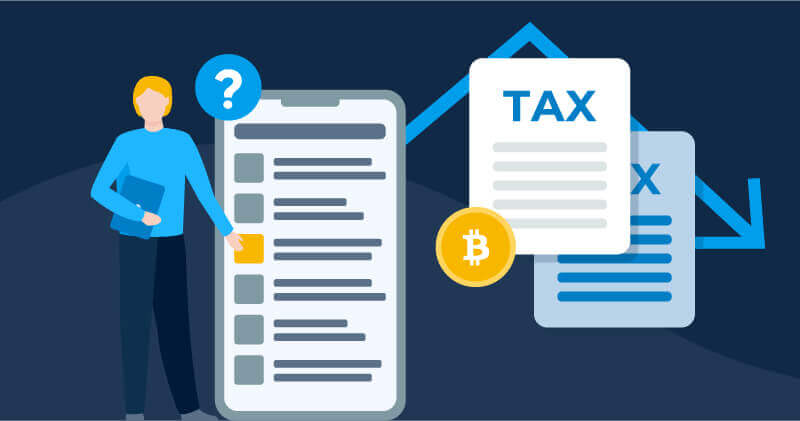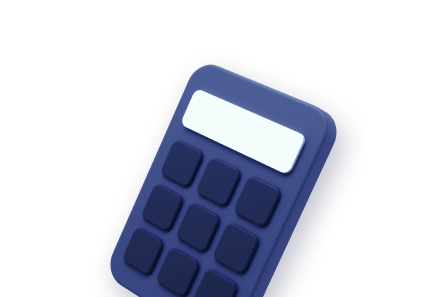.jpg)

Key takeaways
- Crypto margin trading is the process of borrowing money (typically from your exchange) to buy cryptocurrency.
- Margin trading is considered high risk and high reward — it can amplify your gains and losses!
In this guide, we’ll dive into the fundamentals of crypto margin trading to help investors like you navigate this advanced trading strategy with confidence!
What is crypto margin trading?
.jpeg)
Crypto margin trading — or ‘buying crypto on margin’ — is the process of borrowing money from your exchange to buy cryptocurrency. You’ll be required to pay back the borrowed funds with interest at a later time.
Using borrowed money to buy cryptocurrency amplifies your gains and losses. While some investors see significant profits with margin trading, a bad trade can lead to you losing more money than your initial investment!
Margin trading terminology
Here are some terms you should know before you get started with margin trading.
- Initial margin: The collateral you need to get started with margin trading.
- Maintenance margin: The minimum amount of collateral you need to keep your position open.
- Leverage ratio: This ratio tells you how much you’ll be able to borrow depending on the value of your collateral. For example, if you have $1,000 of collateral with 10x leverage, you’ll be able to make a $10,000 trade.
- Margin call: A notification your exchange sends you to add more collateral if it falls below the minimum requirement.
- Liquidation: Your collateral is liquidated when your margin falls too far below the minimum requirements.
How does crypto margin trading work?
.jpeg)
Let’s walk through the fundamentals of crypto margin trading — with a few examples to help you get started!
Getting started with margin trading
To get started, you’ll need to put in an initial margin to receive leverage.
For example, let’s say that you put in 1,000 USD as collateral for your exchange. This means that if your exchange offers 3x leverage for Bitcoin, you’ll be able to purchase $3,000 of BTC.
How does leverage work?
Leverage allows you to enter positions larger than your collateral. The higher your leverage, the bigger the trades you can make.
Remember, the more leverage you take out, the more risk you are taking on. A small decrease in the value of cryptocurrency with 100x leverage can lead to a significant loss.
Margin trading example: Profit
Let’s take a look at an example margin trading scenario.
In this example, Jason puts in $1,000 of capital and makes a return of 100%! Had he invested his own money, he would have only made a return of 20%.
It’s important to note that this is a simplified example. It does not account for transaction fees and interest that Jason would have had to pay upon closing his position.
Margin trading example: Loss
Remember, because margin trading requires you to pay off the loan you received from your exchange — you may lose more than your initial investment!
In this example, Wyla loses $6,000 after an initial $1,000 investment. The maximum she would have lost without margin is $1,000 — highlighting the potential risks that come with margin trading.
Shorting cryptocurrencies
Many margin trading platforms also give you the ability to ‘short’ certain cryptocurrencies. For example, if you think the price of BTC will go down relative to the dollar, you can use margin trading to open up a ‘short’ position on Bitcoin.
What are margin calls?
A margin call is a notification from your exchange when the value of your collateral falls below the minimum margin requirement.
A margin call prompts you to add more funds or close positions to cover the potential loss. Margin calls can happen due to a market downturn where the value of your collateral falls significantly.
Is margin trading better than regular trading?
Crypto margin trading carries much higher risk and much higher potential rewards than regular trading. Due to the risks and complexities involved, beginners are advised to gain experience with regular trading before diving into margin trading.
Isolated margin trading vs. cross-margin trading
.jpeg)
When you get started with margin trading, you may see terms like ‘isolated margin trading’ and ‘cross-margin trading’. Let’s briefly explain what these terms mean.
- Isolated margin: Isolated margin means that your initial margin is used for a single asset. If your margin for this asset is deficient/liquidated, this will not impact other assets that you purchased on margin.
- Cross-margin: Your margin is shared across multiple assets. That means that a gain in one asset can cover a deficiency in another. Alternatively, a deficiency in one asset may be so great that it leads to your entire portfolio being liquidated.
Both isolated margin and cross-margin trading come with pros and cons. Speak to a financial advisor to understand which would be best for your unique situation.
Benefits and risks of crypto margin trading
Benefits of margin trading
- Leveraged returns: Make enhanced profits on borrowed money!
- Larger trading positions: Take a large trading position with a small amount of capital.
- Market flexibility: Profit from both rising and falling markets through long and short positions.
Risks of margin trading
- Amplified losses: Losses can be magnified with margin trading.
- Liquidation risk: If the market moves against your position significantly, you might face liquidation, losing your margin and potentially owing more than your initial investment.
- Interest costs: You’ll need to pay interest on your borrowed funds.
Best tips for margin trading
Let’s walk through a few tips for effective risk management with margin trading.
This includes setting stop-loss orders to limit potential losses, regularly monitoring your positions, and never investing more than you can afford to lose.
- Stop-loss orders: With a stop-loss order, you’ll automatically sell an asset once it reaches a given price. This can potentially limit your losses in the case of a market downturn.
- Start small: Remember, more leverage means more risk. While it can be tempting to open a position with 100x leverage, remember that a small drop in prices can lead to a liquidation.
- Regularly monitor your positions: Be sure to carefully monitor your margin trading positions to limit the risk of a margin call.
- Be cautious: Remember, risks are amplified with margin trading. Never invest more than you can afford to lose.
- Use trusted exchanges: In recent years, cryptocurrency investors have lost access to their holdings after exchange bankruptcies. Be sure that you are trading with an exchange with a good reputation and good risk management measures.
- Know your experience level: Remember, crypto margin trading is considered an advanced strategy. If you’re a beginner or intermediate investor, you may want to focus on spot trading.
4 best platforms for crypto margin trading
Let’s walk through 4 of the best platforms for crypto margin trading. Each platform offers unique features, leverage options, and fee structures, catering to different trading strategies and preferences.
It’s important to note that though crypto margin trading is legal in the United States, it’s tightly regulated. As a result, many popular platforms don’t offer margin trading services to American investors.
Binance
Best for international traders
Binance is the world’s largest cryptocurrency exchange and offers generous margin trading. Binance offers 3x leverage on margin trading on a regular account, and offers up to 10x leverage on isolated margin trading.
Unfortunately, margin trading is not available on Binance.US — Binance’s American subsidiary.
Kraken
Best for security and trust
Kraken offers margin trading for over 100 cryptocurrency pairs, offering 2-3x leverage.
Kraken is considered a safe and trustworthy exchange and is well-known for its user-friendly interface!
Until June 2021, Kraken offered margin trading to customers based in the United States. Afterwards, the exchange tightened eligibility requirements for American customers. Today, only Americans who have more than $10 million in total investments are allowed to trade cryptocurrency on Kraken.
ByBit
Best for high leverage
ByBit is a cryptocurrency exchange famous for offering high leverage crypto trading. ByBit offers leverage as high as 100x for certain assets!
Like some of the other centralized margin trading platforms in this list, ByBit is not available for American investors.
dYdX
Best DeFi option
dYdX is a decentralized, open-source protocol. dYdX is notable for being one of the few DeFi protocols to support margin trading!
dYdX is a great option for investors looking for a decentralized option. At the time of writing, dYdX does not require KYC to get started! Because decentralized protocols are not subject to the same regulations as centralized exchanges at this time, dYdX is a great option for American traders!
Are there fees on crypto margin trading?
Before you get started with margin trading, it’s important to look at your exchange’s fee structure. Margin trading incurs various fees, including interest on borrowed funds, transaction fees, and potentially other costs depending on the platform.
Can I trade crypto on margin with no KYC?
The United States has strict requirements for crypto margin trading. As a result, it’s difficult to find a centralized margin trading platform with no KYC.
While DeFi protocols like dYdX do not require KYC, it’s likely that will change in the near future. The Build Back Better Act mandates that centralized and decentralized exchanges will be required to send tax information on capital gains and losses starting in the 2025 tax year.
Do I pay tax on crypto margin trades?
Typically, profits from cryptocurrency margin trading are subject to capital gains tax. However, calculating capital gains and losses from margin trading can be difficult.
Luckily, there’s an easier way. Crypto tax software like CoinLedger can connect to margin trading platforms like Kraken and automatically calculate your tax bill!
For more information, check out our guide to crypto margin trading tax.
In conclusion
Crypto margin trading offers a path to potentially high rewards but requires a disciplined approach to risk management. Before you get started with margin trading, consider the potential risks and invest with caution.
Frequently asked questions
- What is 10x leverage in crypto?
10x leverage refers to how much you can borrow given the value of your collateral. For example, if your collateral is worth $1,000 and you have 10x leverage, you can make margin trades up to $10,000.
- Is crypto margin trading legal in the US?
While crypto margin trading is legal in the United States, many exchanges don’t offer it due to strict regulatory requirements.
- Is margin trading crypto risky?
Cryptocurrency margin trading is considered risky due to crypto’s price volatility.
- Is crypto margin trading profitable?
While crypto margin trading can be profitable, it can also be very risky. Remember, margin trading essentially amplifies your gains and losses.
- Does Coinbase offer margin trading?
Coinbase briefly offered margin trading through Coinbase Pro. However, the company sunsetted the feature, likely due to the strict regulations associated with margin trading.
How we reviewed this article
All CoinLedger articles go through a rigorous review process before publication. Learn more about the CoinLedger Editorial Process.

CoinLedger has strict sourcing guidelines for our content. Our content is based on direct interviews with tax experts, guidance from tax agencies, and articles from reputable news outlets.






























%20(1).png)





.png)
















